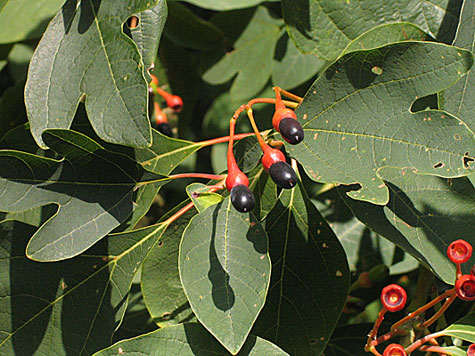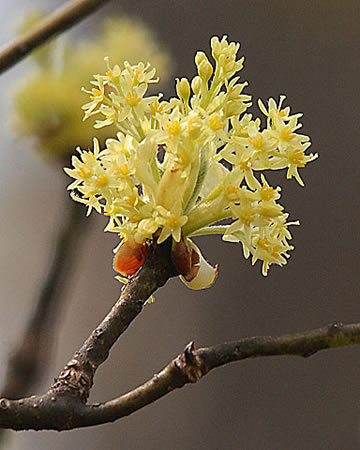 Sassafras
Sassafras
Sassafras albidum (Nutt.)Nees
From Botanical.com
---Description---The name 'Sassafras,' applied by the Spanish botanist Monardes in the sixteenth century, is said to be a corruption of the Spanish word for saxifrage. The tree stands from 20 to 40 feet high, with many slender branches, and smooth, orangebrown bark. The leaves are broadly oval, alternate, and 3 to 7 inches long. The flowers are small, and of an inconspicuous, greenishyellow colour. The roots are large and woody, their bark being soft and spongy, rough, and reddish or greyish-brown in colour. The living bark is nearly white, but exposure causes its immediate discoloration.
The fragrant oil distilled from the rootbark is extensively used in the manufacture of the coarser kinds of perfume, and for scenting the cheapest grades of soap. The oil used in perfumes is also extracted from the fruits. The wood and bark of the tree furnish a yellow dye. In Louisiana, the leaves are used as a condiment in sauces, and also for thickening soups; while the young shoots are used in Virginia for making a kind of beer. Mixed with milk and sugar, Sassafras Tea, under the name of 'Saloop,' could, until a few years ago, be bought at London streetcorners in the early mornings.
HOME "S"LIST

 Sassafras
Sassafras